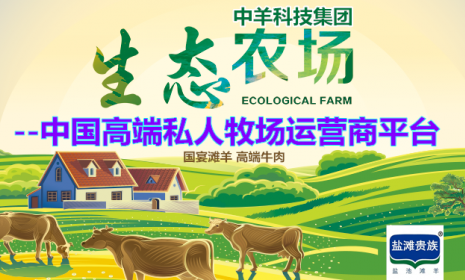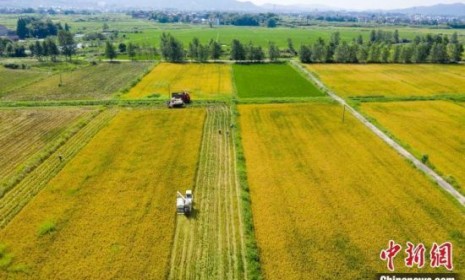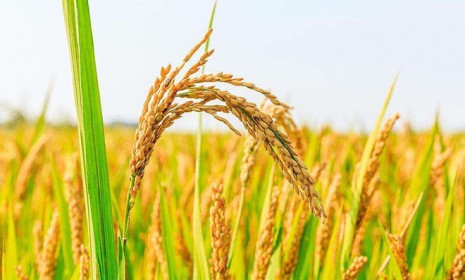近日,继报道氧化铈纳米颗粒提高棉花抗盐能力的机理研究(Liu et al. 2021, Journal of Nanobiotechnology)后,华中农业大学植物科学技术学院吴洪洪教授课题组在Journal of Nanobiotechnology在线发表了题为“Nanoceria seed priming enhanced salt tolerance in rapeseed through modulating ROS homeostasis and α-amylase activities”的研究论文,报道了氧化铈纳米颗粒种子引发提升油菜耐盐能力的可能机理。
盐胁迫是影响农作物高效生产的主要限制因素之一。油菜作为全世界广泛栽培的重要经济作物,盐胁迫严重影响了其产量与品质。此外,利用油菜进行盐碱地改良也是目前的一个研究热点。因此,提高油菜耐盐能力不仅可以促进油菜的盐碱地种植,也能有利于更好地开展盐碱地改良。纳米材料种子引发(使用纳米材料对种子进行引发)在提高作物耐盐中具有巨大的应用潜力。然而,关于纳米材料种子引发提升作物耐盐能力的具体机理仍有许多不明之处。
氧化铈纳米颗粒种子引发提高了油菜幼苗钠钾稳态维持能力
在本研究中,研究人员合成了聚丙烯酸修饰的低Ce3+/Ce4+掺杂比率的氧化铈纳米颗粒(PNC)。通过PNC引发油菜种子8小时,显著地提升了油菜种子在盐胁迫下(200 mM NaCl)的发芽率、鲜重以及水分吸收。盐胁迫下,通过PNC引发油菜种子显著降低了发芽7天后的油菜幼苗活性氧含量(·O2-和H2O2)以及提升了抗氧化酶活性(SOD、POD、CAT)。同时,PNC降低了盐胁迫下油菜幼苗地上部以及根系的Na+含量,提升了K+含量,维持了较好的Na+/K+稳态。以上结果证明,PNC通过缓解氧化应激以及维持离子平衡提升了油菜种子在盐胁迫下的发芽能力。
α-淀粉酶是种子发芽期间负责淀粉降解的关键酶。本研究发现,盐胁迫下PNC显著提高了油菜种子引发期间的α-淀粉酶活性。qPCR结果显示,PNC引发上调了与α-淀粉酶相关的两个基因(AMY1和AMY2)表达量。这些结果证明PNC通过调控油菜种子α-淀粉酶活性,提升了其在盐胁迫下的发芽能力。此外,激光共聚焦结果表明,种子引发期间,PNC大多附着在种皮表面,表面PNC和油菜种子种皮之间可能也存在相互作用,从而提升其耐盐能力。本研究从活性氧稳态平衡和α-淀粉酶角度揭示了氧化铈纳米颗粒种子引发提升油菜耐盐能力的机制,为纳米材料种子引发提升作物耐盐机理研究提供了更多理论支撑。总之,本研究进一步展示了植物纳米生物技术在提高作物抗逆能力方面的良好应用潜力,也表明学科交叉有可能为研究实践生产中的科学问题提供新的备选研究或技术方案。
种子引发过程中,氧化铈纳米颗粒在油菜种子中的分布
华中农业大学植物科学技术学院吴洪洪教授课题组博士后Mohammad Nauman Khan为该论文第一作者,植物科学技术学院李召虎教授、吴洪洪教授为本文通讯作者。本研究得到国家自然科学基金委项目 (31901464,32071971),华中农业大学高层次人才引进经费、校自主基金优秀人才培育项目(2662020ZKPY001)和华中农业大学-中国农业科学院深圳农业基因组研究所合作基金(SZYJY2021008)等项目资助。
【英文摘要】
Background
Salinity is a big threat to agriculture by limiting crop production. Nanopriming (seed priming with nanomaterials) is an emerged approach to improve plant stress tolerance; however, our knowledge about the underlying mechanisms is limited.
Results
Herein, we used cerium oxide nanoparticles (nanoceria) to prime rapeseeds and investigated the possible mechanisms behind nanoceria improved rapeseed salt tolerance. We synthesized and characterized polyacrylic acid coated nanoceria (PNC, 8.5?±?0.2 nm, ?43.3?±?6.3 mV) and monitored its distribution in different tissues of the seed during the imbibition period (1, 3, 8 h priming)。 Our results showed that compared with the no nanoparticle control, PNC nanopriming improved germination rate (12%) and biomass (41%) in rapeseeds (Brassica napus) under salt stress (200 mM NaCl)。 During the priming hours, PNC were located mostly in the seed coat, nevertheless the intensity of PNC in cotyledon and radicle was increased alongside with the increase of priming hours. During the priming hours, the amount of the absorbed water (52%, 14%, 12% increase at 1, 3, 8 h priming, respectively) and the activities of α-amylase were significantly higher (175%, 309%, 295% increase at 1, 3, 8 h priming, respectively) in PNC treatment than the control. PNC primed rapeseeds showed significantly lower content of MDA, H2O2, and ?O2? in both shoot and root than the control under salt stress. Also, under salt stress, PNC nanopriming enabled significantly higher K+ retention (29%) and significantly lower Na+ accumulation (18.5%) and Na+/K+ ratio (37%) than the control.
Conclusions
Our results suggested that besides the more absorbed water and higher α-amylase activities, PNC nanopriming improves salt tolerance in rapeseeds through alleviating oxidative damage and maintaining Na+/K+ ratio. It adds more knowledge regarding the mechanisms underlying nanopriming improved plant salt tolerance.
原文链接:
https://jnanobiotechnology.biomedcentral.com/articles/10.1186/s12951-021-01026-9
日期:2021-09-23


















